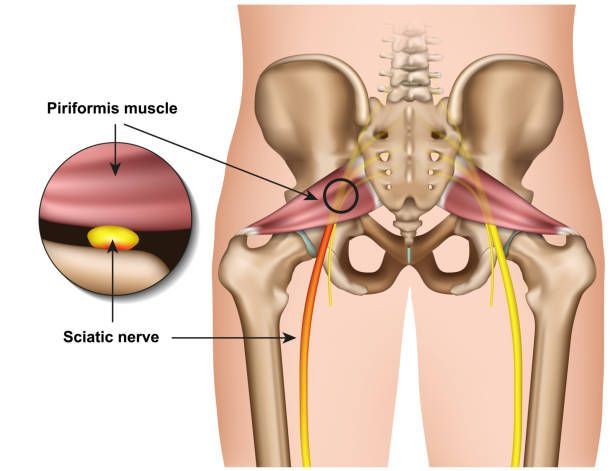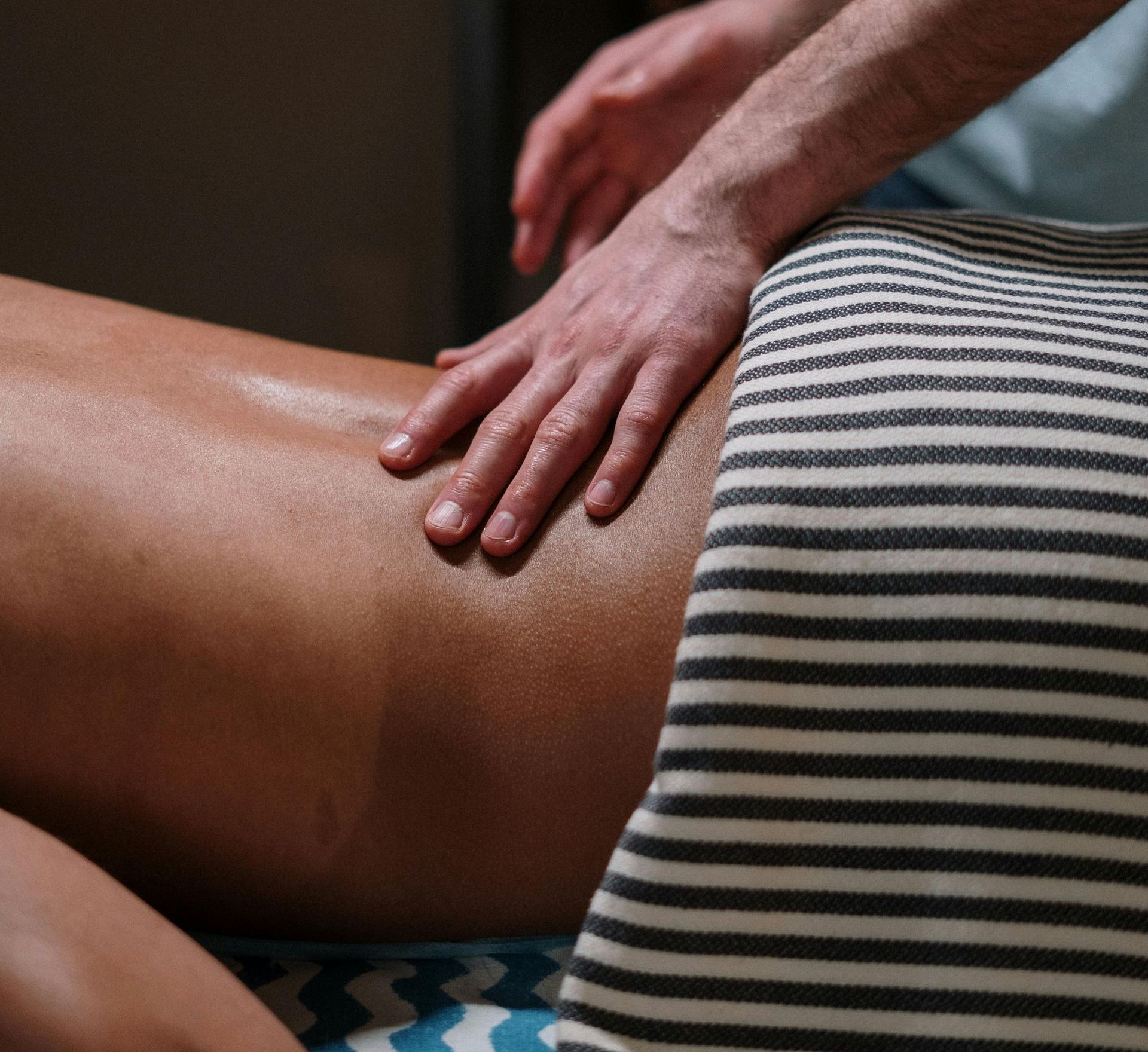Muscle Highlight: The Piriformis
Ever felt a deep ache or sharp pain in your glutes or lower back — perhaps even pain that radiates down your leg? That might be your piriformis talking to you. Though small in size, the piriformis muscle can cause a world of discomfort when it’s tight or irritated.
Let’s take a look at what the piriformis muscle is, what it does for you, and why you might want to have it massaged. You'll also see some great stretches to relieve tension in this muscle.
Where Is the Piriformis Muscle?
The piriformis is a flat, band-like muscle located deep in the buttock, behind the gluteus maximus. It stretches from the sacrum (the base of the spine) to the greater trochanter of the femur (the top of the thigh bone).
Because of its location, the piriformis is close to the sciatic nerve—which is key in understanding why tightness here can be so uncomfortable. When the piriformis muscle is tight or inflamed, it can compress the sciatic nerve. This can create glute or back pain that radiates down your leg and is known as piriformis syndrome.

What Does the Piriformis Do?
The pear-shaped piriformis muscle plays an important role in:
- Hip rotation: It helps rotate the thigh outward (external rotation). This helps with movements such as entering a Warrior 2 asana in yoga and turning while walking or running.
- Stabilization: It supports pelvic stability during movement.
- Walking and posture: It engages during walking, shifting weight, and standing to maintain balance.
Why Would You Get Your Piriformis Massaged?

When the piriformis gets overused (i.e. think long drives, lots of sitting, or intense workouts) it can spasm or tighten, leading to symptoms like:
- Deep gluteal pain
- Shooting pain down the leg (sciatica-like symptoms)
- Tight hips or reduced mobility
- Pain when sitting or climbing stairs
Massage therapy can help:
- Release chronic tension in the piriformis and surrounding muscles
- Relieve pressure on the sciatic nerve
- Improve blood flow and mobility
- Reduce pain and improve posture
Your massage therapist may use deep tissue techniques, trigger point therapy, and/or myofascial release to access this deep muscle and encourage it to relax.
What are Some Stretches for Your Piriformis?

Stretching your piriformis regularly can help maintain flexibility and prevent flare-ups. Here are a few effective and accessible stretches:
1Supine Figure 4
- Lie on your back with both knees bent.
- Cross one ankle over the opposite thigh.
- Hold here, or thread your hands behind the supporting thigh and gently pull toward your chest.
- Hold for 30 seconds, then switch sides.
Seated Figure 4
- Sit in a chair with feet flat.
- Cross one ankle over the opposite knee.
- Gently lean forward until you feel a stretch in the glute.
- Hold and breathe deeply, then switch sides.
Pigeon Pose
- From hands and knees or downward facing dog, bring one knee forward, placing it behind your wrist. Bring your shin across so that your ankle is behind your opposite wrist. It's okay if your shin is at an angle (like in the image above).
- Extend the back leg behind you and lower your chest over your front shin.
- Hold for 30–60 seconds, switching sides when ready.
Tip: Always move slowly into stretches and avoid pushing into pain. If you’re unsure, your massage therapist or yoga teacher can help you modify these for your body.
The Bottom Line
The piriformis may be a small muscle, but when it’s unhappy, it lets you know. Regular massage and targeted stretching can ease tightness, improve mobility, and help prevent nerve compression.
If you’re dealing with hip, glute, or low back pain—or just want to keep your body moving freely—addressing the piriformis could be key.
Need help unlocking this stubborn muscle? Book a session and let’s give your piriformis some well-deserved attention.
On the Blog



